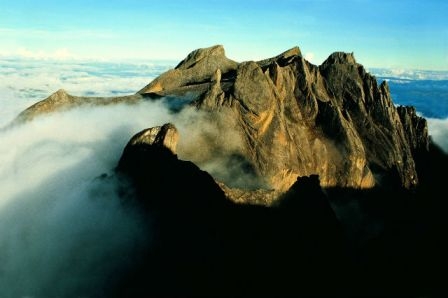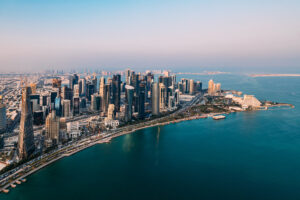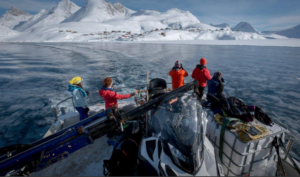Southeast Asia’s highest peak

By Carmela G. Lapena , GMA News
On the northwest coast of Borneo island, Kota Kinabalu has a wide variety of attractions, including Southeast Asia’s highest peak. Whether your idea of adventure is exploring the great outdoors or indulging in tasty seafood dishes, you’ll be sure to find something in the state of Sabah’s capital city.
There are many reasons why Kota Kinabalu should be in your travel list for 2012, according to a press release from South East Asian Airlines (SEAIR), which offers roundtrip flights to the exotic destination from the Clark International Airport.
For adrenalin junkies, there’s Mount Kinabalu, the highest peak in archipelagic Southeast Asia. Rising 13,435 feet in the middle of a national park, Mount Kinabalu is the first Malaysian UNESCO World Heritage Site. Larger than Singapore, the Kinabalu National Park has around 1,000 species of orchids and over 600 species of ferns, according to the Sabah Tourism Board.
Also found in the park are two species of Rafflesia, the world’s largest flower. They can grow up to three feet in diameter and are “usually reddish-brown and stink of rotting flesh,” according to the Biological Sciences Department of Western Michigan University.
Encountering such a flower will surely make your trip memorable, especially if it’s your first time climbing a mountain. Even couch potatoes can experience Mount Kinabalu, as there are easy trails for beginners.
For something more serious, there’s the Mount Kinabalu International Climbathon, which will be held this year on October 14. Now on its 26th year, the grueling climb features a 23-km race course, or two kilometers longer than last year’s track. Originally, the race followed the mountain summit trail from the park headquarters to the peak and back, but it will now pass through Mesilau Nature Resort and end at Kundasang town.
Nature lovers can also explore the Lok Kawi Wildlife Park, which was developed by the Sabah Wildlife and Forestry Department. It harbors many of the endangered animals of Borneo, and aims to educate the public on the importance of wildlife rehabilitation and conservation.
Borneo Pygmy elephants, Sumatran rhinoceros, and the Malayan tiger are some of the inhabitants of the family-oriented park. The 70-hectare park also has a “primate zone” which features orangutans and proboscis monkeys, so named for their prominent bulbous noses. The park also has an aviary which houses a variety of endemic bird species, the tourism board said.
For birdwatchers, the 24-hectare Kota Kinabalu Wetlands, located just a mile from the city center, has recorded sightings of more than 80 species of birds. Managed by the local NGO Sabah Wetlands Conservation Society, there is a 1.5-km boardwalk that brings nature lovers into a mangrove, where resident birds as well as migratory species have been spotted.
Beach lovers can explore the reefs at the Tunku Abdul Rahman Park, a popular spot for snorkeling and diving. With shallow waters and little current, even novice divers can explore the reefs. Among the marine life spotted in the area are the scorpionfish, blue-spotted rays, cuttlefish, mantis shrimps, green and hawksbill turtles, and even the exotic harlequin ghost pipefish and mandarin fish.
Culture vultures can head to the forests of Kionsom, Inanam, and explore the Mari-Mari Cultural Village. Here, visitors can find the traditional homes of the Sabahan ethnic communities: Bajau, Lundayeh, Murut, Rungus and Dusun. Ancient Borneo is portrayed through the simulated lives and ritualistic ceremonies and the unique architecture of indigenous dwellings. “Travelers can also witness tribesmen demonstrating the art of blowpipe-making, fire-starting using bamboo, and tattoo-making, as well as learn about the mystical symbolisms attached to them,” the tourism board said.
Meanwhile, the riverside Monsopiad Cultural Village is dedicated to a fearsome warrior who lived in the Kuai village nearly two centuries ago. The Main House gives visitors a glimpse of Monsopiad’s life through its exhibit of ceramic jars, padi grinders, and bamboo items. Also on display is the costume of high priestess Bobohizan Inai Bianti, a direct descendant of the warrior.
No trip is complete without experiencing local cuisine, and the Sabah Tourism Board recommends the lat zi hai (crab in hot & spicy sauce), butter prawns, kam heong la la (stir-fried fragrant clams) and sayur manis or fern cooked with belacan (prawn paste) at the lakeside Kampung Nelayan Floating Seafood Restaurant. Located only 10 minutes from the city center, Kampung Nelayan offers nightly cultural performances set on a floating stage with traditional Malay architecture.
At the Ocean Seafood Restaurant and Port View Seafood Village, diners can select crabs, shellfish, lobsters, and fish straight from the tank. Other popular dining spots include the Tanjung Aru Beach Seafood Restaurant, which offers diners spectacular vistas of the sea and the Sri Selera Kapung Air, a row of seafood restaurants at the Sedco Complex.
















